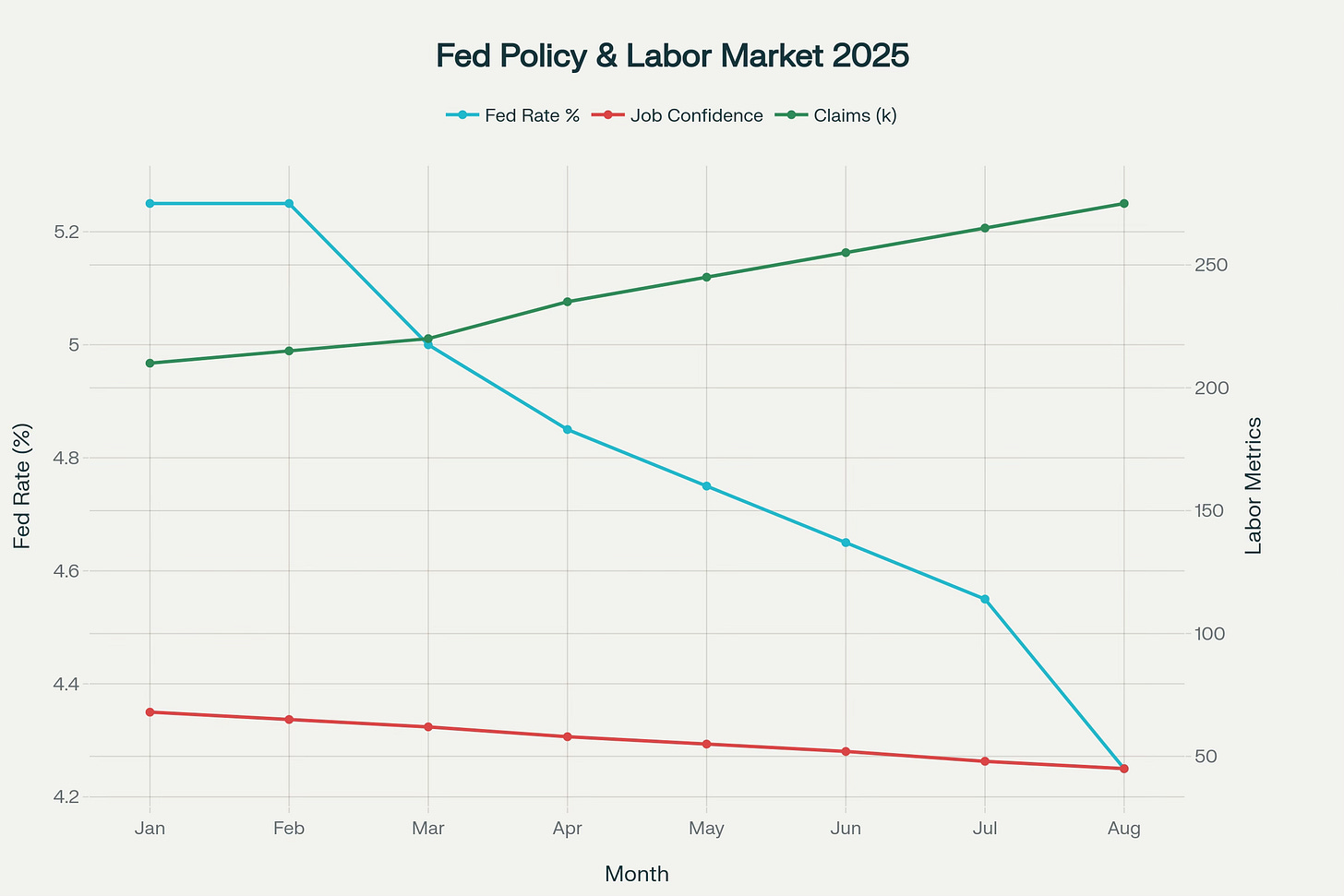The Week Ahead: Operating by John Brewton (8.24.25 to 8.31.25)
A weekly operating map for founders: The Fed, AI, and consumer pressures collide, what it means for operators and founders this week
Each week I break down the market, policy, and technology developments that matter most for operators and founders. My goal is to distill signals into practical insights for Operators and Founders. These updates are designed to help you allocate capital, manage teams, and plan strategy in our fast-moving, complex environment. Think of this as your weekly operating map, clear, actionable, and built for better decision-making.
In this edition, I’ll walk through the major themes shaping the week ahead: labor market fragility, AI integration, consumer demand pressures, and volatility events. But more importantly, I’ll highlight three deeper, easy-to-miss points of synthesis that matter for operators: how the Fed’s framing of labor fragility diverges from AI’s structural reshaping of white-collar work, why the slowdown in frontier AI models creates a fleeting integration window, and what “high-low tech” lessons from global conflicts can teach us about resilient supply chains.
1. Labor Market Fragility and the Fed’s Pivot
📊 Chart 1: Fed Policy Shift Driven by Labor Market Fragility
As job seeker confidence collapses and claims rise, the Fed pivots from hawkish to dovish, signaling cheaper capital but weaker labor conditions.
The Jackson Hole announcement confirmed what data had been signaling since spring: job seeker confidence fell from 68 to 45 while claims rose steadily. The Fed’s policy stance shifted accordingly, from hawkish at the start of the year to dovish by August.
This isn’t just a cyclical slowdown; it is the beginning of what economists are calling the “white-collar recession.” Unlike prior recessions driven by output declines, this one is task-level and selective:
➡ Silent displacement: AI tools allow one professional to do the work of two.
➡ Entry-level erosion: Training ground roles are vanishing.
➡ Sector divergence: Healthcare and education continue to add jobs, while manufacturing and government are losing them.
Operating Perspective: Borrowing costs are likely to decline, but demand will also decline. Operators should prepare for a market where capital is cheaper but growth harder to capture. Hiring strategies should shift from expansion to upskilling and retention.
Keep reading with a 7-day free trial
Subscribe to Operating by John Brewton to keep reading this post and get 7 days of free access to the full post archives.



